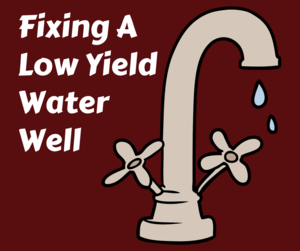CALL TODAY 1-800-441-6281
CALL TODAY 1-800-441-6281

Whole House Water Treatment Systems
Installing a point of entry or POE water treatment system to treat your homes water supply can be a worthwhile investment in your family’s health. A POE whole-house water treatment system is mainly designed to remove contaminants in water used for showering, washing clothes and dishes, and brushing teeth.
When choosing a water treatment option it’s important to define exactly what your needs may be. Some systems are designed to remove certain contaminants such as arsenic, heavy metals or excess minerals. Here are a few options to consider to help you to understand the options!
Common Water Treatment Systems
Ion Exchange System
An Ion Exchange system relies on resins to remove contaminants from your water. The selection and choice of resins is dependent upon the particular contaminants needing removal, and the level it must be reduced. The primary driving force is selectivity. Before considering an Ion Exchange System, it’s important to have an in-depth analysis of your home's water to determine the configuration of the system.
Cation Exchange Water Softening
Ion exchange systems are ideal for softening water and are the most commonly used system for this purpose. The typical system for softening consists of a pressure tank filled with sulfonated polystyrene balls, which remove the hardness ions and replaces them with softer ions such as sodium. The unit is collected to a brine tank that is filled with salt, which periodically replenishes the resin beads. The beads attract and hold onto calcium and magnesium ions as the water filters through. When the beads become saturated, the unit rinses them with the brine solution to clean them and prepare them to absorb more ions.
Water Filtration Systems
Filtration water treatment systems are the best way to remove organic and inorganic material like microbiological and viral contaminants. Filtration systems are also best at removing particulates such as sand, rust and salt.
These systems use a fine physical barrier, chemicals, or some other method to help clean water and make it suitable for drinking and other household uses. While there are many specialty media and membranes available, the most commonly used material is activated carbon. Activated carbon targets various volatile organic compounds like benzene, trichloroethylene and various pesticides and petroleum-related compounds. Sediment and tank filtration systems remove contaminants as water enters your home. A POE filtration system is installed where the water enters your home plumbing system.
Electrochemical Water Treatment Systems
EC systems use electricity to aid in the removal of dissolved contaminants in water. Positively charged contaminants are called cations and include calcium, magnesium, sodium, lead and uranium. Negatively charged contaminants are known as anions and include chlorides, sulfates, nitrates, nitrites and fluorides. A negatively charged electrode will cause positively charged cations to move towards it. EC systems use a combination of electricity and ion exchange membranes. Anything that is ionized when dissolved in water is reduced.
A whole house system is an effective water treatment option to reduce or stop contaminants from entering your water supply. It’s important to understand what issues you may have with your water by performing an analysis before installing any system. A POE system combined with point of use treatment systems like faucet filtration can make sure that your family will enjoy a healthy, safe supply of life-giving water in your home.

